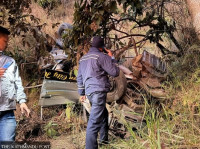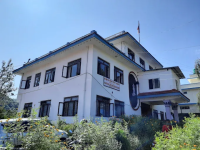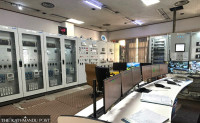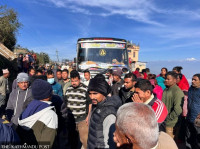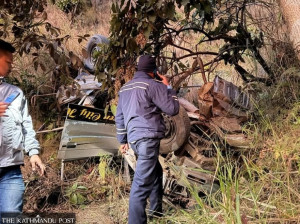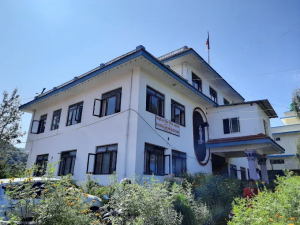Bagmati Province
Supraglacial lake outburst in Tibet caused Bhotekoshi flooding
Reports by hydrology department and ICIMOD say satellite image analysis of a glacial lake upstream confirms it caused Tuesday’s flooding.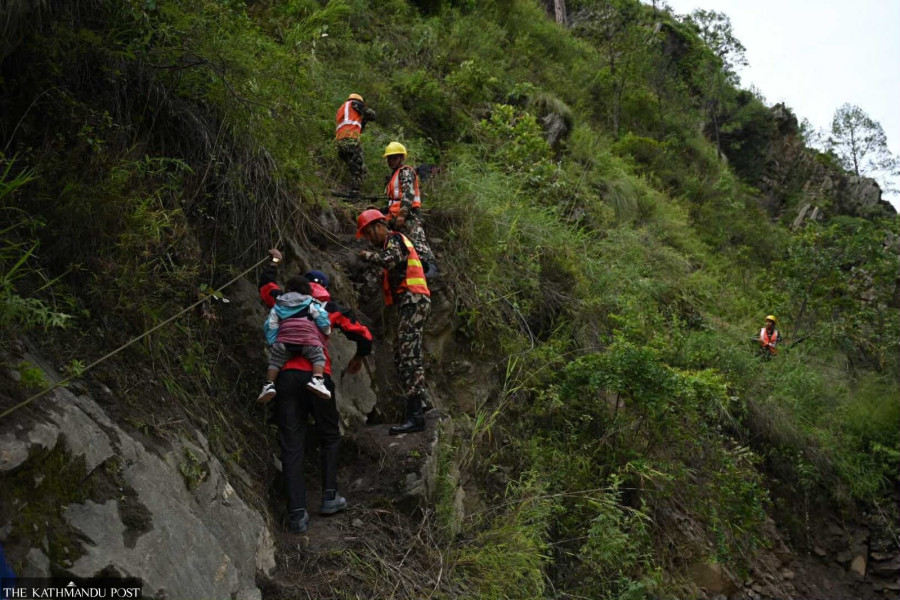
Arjun Poudel
An outburst of a previously unnoticed supraglacial lake formed in Tibet above the Rasuwagadhi border point is responsible for Tuesday’s devastating flood on the Bhotekoshi river, according to two separate reports by the Department of Hydrology and Meteorology and the International Centre for Integrated Mountain Development (ICIMOD).
Issuing a preliminary study report and satellite pictures of before and after the flood on Thursday, the department said that a supraglacial lake is located at an altitude of 5,150 metres, approximately 36 kilometres upstream of Rasuwagadhi.
The flood is a clear sign of Nepal’s growing vulnerability as climate change drives the formation and rapid expansion of glacial lakes in the Himalayas.
The first picture [taken before the flood] shows that the size of the lake formed on the top of the glacier was 0.75 square km. The second picture [taken after the flood] shows the size of the lake, only 0.61 square km.
Analysis of these images reveals a significant difference between the conditions before and after the flood, according to officials.
“There is a noticeable reduction in the area of the glacial lake, which strongly suggests that water was discharged from the lake," reads the report. “Based on the above details, the Department of Hydrology and Meteorology has reached a preliminary conclusion that the flood was triggered by a glacial lake outburst.”
Supraglacial lakes are small lakes formed on the surface of glaciers, particularly in debris-covered areas. They are highly dynamic and temporary, often beginning as small meltwater ponds that gradually expand and sometimes merge to form larger supraglacial lakes.
The department said that it is waiting for a further detailed report from China and further satellite imagery may provide additional information.
Another report by ICIMOD also stated that glacial-origin floods or GLOF events were triggered by draining newly formed (supraglacial) ice-dammed glacial lakes in the Bhotekoshi river in Rasuwa. According to the report, satellite images show that the lake had grown rapidly between December 2024 and June 2025.
“Initially a small pond on the surface of a retreating glacier, the lake expanded significantly due to sustained temperature rise and collapsed earlier this week under pressure, sending a torrent of water and debris downstream through the Bhotekoshi river,” reads the report.
Nepal is one of the world’s most vulnerable countries to the climate crisis and has witnessed extreme weather events over the past decade and a half. On Tuesday, the country witnessed two glacial-originating floods in Rasuwa and Upper Mustang. It also witnessed glacial lake outburst incidents in Humla district in the third week of May. Last year, Thame village of Solukhumbu witnessed a massive flood triggered by a glacial lake outburst.
Experts at ICIMOD say that they are shocked at the increased frequency of glacial-origin hazards—a threefold increase in glacial-origin floods compared to what is projected by the end of the 21st century.
“The acceleration of these types of events is completely unprecedented in the Hindu Kush Himalayan region. We need to delve deeper into the triggers that are resulting in cascading impacts,” Saswata Sanyal, ICIMOD Disaster Risk Reduction Lead, is quoted in the report as saying.
Nepal has 21 potentially dangerous glacial lakes out of 47 in the Himalayan region (25 in China and one in India). However, the country has only two functioning early warning systems for two glacial lakes—Imja and Tsho Rolpa. Thousands of other lakes, including short-lived supraglacial ones like the one above Bhotekoshi, remain unmonitored.
As all three glacial lake outbursts in recent times were unnoticed, there could be dozens of such temporary lakes in the Himalayan region, which could spell disaster at any time, experts say.
“Like the one we recently witnessed in Rasuwa, Upper Mustang, Solukhumbu and other places in recent times, such surprises could be intensified in the coming days due to global warming,” said Madhukar Upadhyay, a climate expert. “Our infrastructures are not built to withstand the climate-induced disasters, and we are not learning anything from the losses we incurred.”
At least nine people have died and 19 remain unaccounted for in Tuesday morning’s flood in Rasuwagadhi, according to Nepal Police. The flood also swept away the Friendship Bridge, which connected Nepal with Tibet. Several hydropower projects constructed on the Trishuli river suffered severe damage, disrupting power generation.
A dry port being constructed at the Rasuwagadhi border point sustained severe damage, and multiple loaded container trucks and electric vehicles parked at the customs point were swept away in the flood.
Experts say extreme weather events—excessive rainfall in a short period, continuous rains for several days after the monsoon, dry spells, droughts, below-average precipitation, and above-normal winter temperatures caused by climate change—have become more frequent in the country.




 17.49°C Kathmandu
17.49°C Kathmandu
